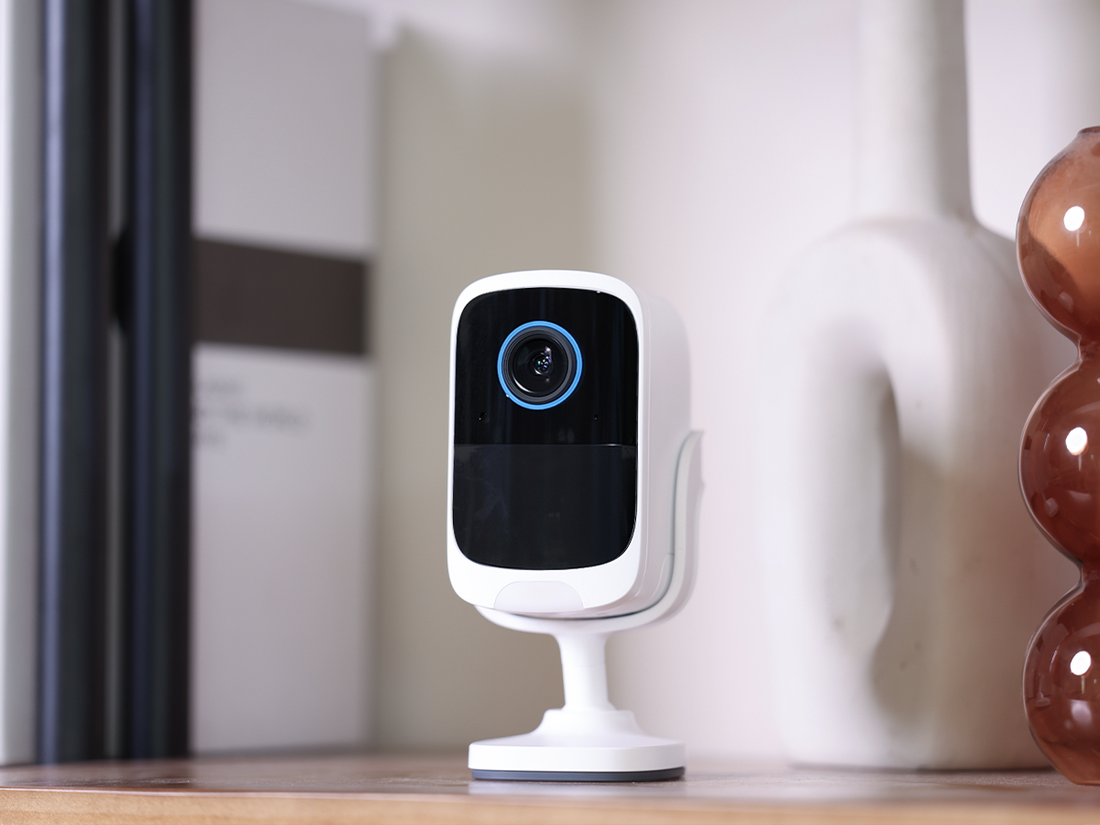Hidden vs Visible Home Security Cameras: Which is Best?

When it comes to protecting your home, the decision to install outdoor security cameras is a no-brainer.
However, one crucial question remains: should these cameras be visible or hidden?
As you contemplate enhancing your home's security, it’s essential to weigh the pros and cons of each approach. Let's delve into the topic to help you make an informed decision.
Should Security Cameras Be Visible?
Visible security cameras serve as a powerful deterrent. When potential intruders see cameras, they are less likely to target your home.
The mere sight of a camera can make a would-be burglar think twice, knowing that their actions are being recorded and they are more likely to be caught.
Advantages of Visible Security Cameras
Deterrence Factor
The primary advantage of visible cameras is their ability to deter crime. Studies have shown that homes with visible cameras are less likely to be targeted by burglars.
For example, research by ADT indicates that homes with visible cameras can experience a reduction in crime by up to 50%.
Imagine a burglar scouting a neighborhood. They are more likely to avoid homes where cameras are prominently displayed, opting instead for a house without such obvious security measures.
Community Awareness
Visible cameras can also promote a sense of community security. Neighbors are likely to be more vigilant, knowing that surveillance is in place. This shared sense of security can enhance neighborhood watch efforts, creating a safer environment for everyone.
Peace of Mind
Seeing cameras around your property can provide a significant sense of security and peace of mind. You’ll know that your home is actively monitored and protected.
Is It Better to Have Cameras in Open View or Hidden?

Choosing between open view and hidden cameras depends on your specific security goals. While visible cameras excel at deterring crime, hidden cameras offer other unique advantages.
Advantages of Hidden Security Cameras
Surprise Element
Hidden cameras can capture activities without the subject being aware they are being monitored. This can be particularly useful if you suspect ongoing issues, such as repeated thefts by someone with access to your property.
For instance, if packages are frequently going missing from your porch, a hidden camera can help identify the culprit without alerting them.
Aesthetics
Hidden cameras can blend seamlessly into your home’s exterior, avoiding the sometimes unsightly appearance of traditional security cameras.
This can be particularly important if you’re concerned about maintaining the aesthetic appeal of your home.
What Are the Disadvantages of Hidden Cameras?
While hidden cameras have their benefits, there are also notable drawbacks to consider.
Disadvantages of Hidden Security Cameras
Limited Deterrence
Since hidden cameras are, by definition, not visible, they do not deter crime in the same way that visible cameras do. A potential intruder won’t be aware they are being watched and might proceed with their plans.
This means you may end up capturing evidence of a crime rather than preventing it.
Legal and Ethical Concerns
There are legal and ethical considerations when it comes to using hidden cameras. Laws regarding surveillance vary by location, and it’s crucial to ensure you are compliant with local regulations.
For example, recording audio or placing cameras in areas where people expect privacy can be illegal and unethical.
Maintenance and Accessibility
Hidden cameras can be harder to maintain. Because they are concealed, accessing them for maintenance or troubleshooting can be more challenging.
This might mean more effort and expense in ensuring your system is always functional.
Practical Examples and Considerations

When deciding between visible and hidden cameras, consider the specific areas you want to monitor and your primary security concerns.
Example 1: Front Yard and Entryways
Visible cameras are ideal for these locations. They not only capture footage of anyone approaching your home but also serve as a clear warning to would-be intruders. A well-placed camera above your front door can be a highly effective deterrent.
Example 2: Backyard and Secluded Areas
Hidden cameras might be more suitable for monitoring areas like backyards or side alleys where aesthetics or discreet monitoring are prioritized. However, for solar-powered cameras, ensure they still receive adequate sunlight to function effectively.
Example 3: High-Risk Outdoor Areas
For locations like a garage, back alley, or other secluded parts of your property, a combination of both visible and hidden cameras can be highly effective. The visible cameras deter while the hidden cameras ensure coverage if someone bypasses the visible deterrents.
Conclusion: Hidden vs. Visible Security Cameras
When considering the best approach to outdoor security, the decision between hidden and visible security cameras isn't straightforward. Both types of cameras have their place in a comprehensive home security strategy.
Visible cameras are excellent for deterring crime and providing peace of mind, while hidden cameras offer discreet surveillance and can capture crucial evidence without alerting the subject.
When deciding what’s best for your home, consider your specific security needs, the layout of your property, and any legal implications. A combination of both types of cameras might provide the most robust protection, ensuring you’re prepared for any situation.
At Safemo, we understand that every home is unique, and our range of solar-powered security cameras is designed to meet diverse needs. Whether you prefer visible deterrents or hidden surveillance, we’ve got you covered. Explore our products and take the first step towards a safer home today.